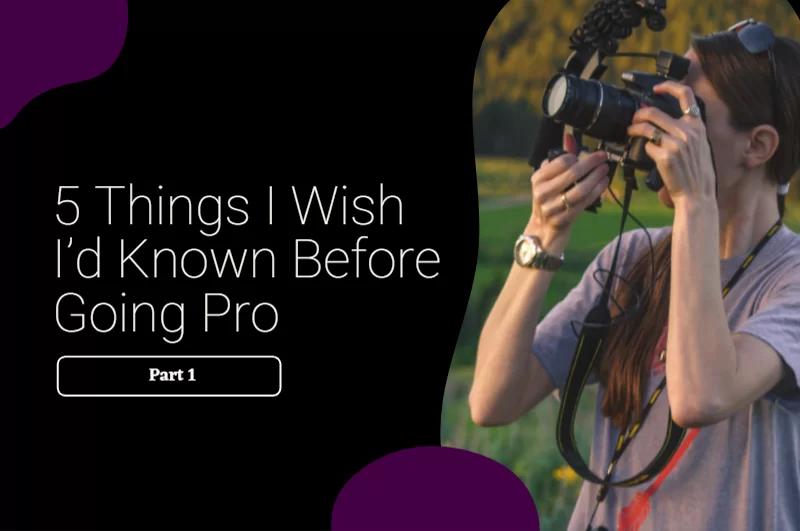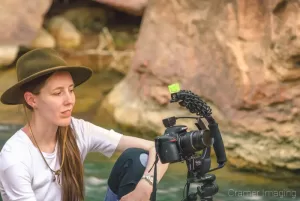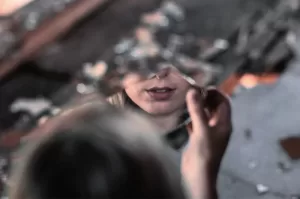
I’ve been a professional photographer for several years now. Over that time, I’ve made a lot of mistakes and missteps. Perhaps I’ve made more mistakes as a pro than I did as a beginner. Since they say that good decisions come from wisdom and experience and also wisdom and experience come from bad decisions, perhaps I should share some of my experience. So, here are 5 tips which I really wish I would have known when I transitioned to a professional photographer.

I really wish a shortcut existed in professional photography. It would make life so much easier. However, there’s not. So I must make due and learn the best I can from my attempts and mistakes. Here are 5 mistakes I made when going pro which I hope you can learn from.
For those of you who don’t understand the saying or the word ‘dime,’ I’ll explain. A dime is a monetary unit in the United States. It’s not a very big unit (10 cents) but it’s still in common use. The saying means that you can’t learn your professional skill-set while working for a paying customer/client. That’s not cool.

I started out in professional photography WAY too early. I didn’t know what I was doing. So, I didn’t land customers and clients except those seeking extremely cheap rates. They never bragged about my skills. They bragged about my prices. When I adjusted my prices to something more reasonable, then my stream of clients/customers dried up. I didn’t land new customers for years. I expected to learn and grow as a photographer while receiving pay for doing so. It didn’t work out that way.

What I came to learn was slow and painful. However, it’s still very true. People (meaning customers and clients) expect a certain minimal level of quality and professionalism from a professional (fill in the blank). They don’t want to pay for your experimentation. They don’t have time for you to try something only to determine it won’t work. Those clients and customers want quality results and they want them in timely manner. If you can’t or don’t appear able to deliver, they’ll take their business elsewhere. They don’t want to pay you money for your mistakes and learning curve. It’s really that simple and it’s also a lesson I needed to learn when I went pro.
Here’s a comparison between my beginner skills which I hoped to charge for and my later more professional skills. Perhaps you understand why I struggled professionally for so long.
These two examples are a mere sampling of what I’m describing. I used to fill my portfolio with sub-standard photos and regularly display it online.
Once I specialized and learned my craft on my own time, I started receiving customers again. The photos above are photos I actually accepted commissions to take. Yep. Someone hired me to take those landscape photos AFTER I demonstrated I already knew what I was doing as a professional photographer.
My main take-away lesson for you is to not go pro until your photography and photography skill-set (meaning your camera skills, posing skills, post-processing skills, and more) meets a minimum level of quality. Know what you’re doing and demonstrate it regularly in your work before you hang out your shingle and go pro.
Oh, what I painful lesson I learned. A few years ago, my hard drive crashed. This hard drive stored most of my photo archives. I lost a lot. I’m still recovering from that loss and there’s a few photos which I’m not sure I’ll ever recover. Included in that loss were some client files. Fortunately, those files belonged to clients not likely to require duplicates as they weren’t recent clients. However, the risk still applies.

Now, imagine if you’re a wedding or portrait photographer. This might apply to modeling, fashion, commercial, and other professional photographers accepting clients regularly. Your hard drive crashes and you have no backups. That’s a nightmare situation. Many photographers might schedule another shoot. However, wedding photographers are screwed. Weddings don’t receive do-overs. This is why you back up your photos. You never know when your hard drive will crash and you’ll lose all your data. You might not recover all or any of it. Can your business afford that kind of a loss? Can you afford having angry clients complain about your loss making you unreliable? I sure can’t. Even one episode of this might mean the kiss of death for me and my photography business.



How do you avoid this tragedy? Very simply: you backup your photos. Since disasters extend to more than simple hard drive crashes, you must prepare for other situations as well. You’ll need to backup your photos on multiple different types of media (hard drive, flash drive, CD/DVD, cloud storage, etc.) and keep offsite backups in case of fires, robberies, earthquakes, tsunamis, etc. Then, you’re far better prepared for a data loss than I was.
In business, contracts represent safety and understanding. In a contract, you lay out the exact terms and conditions of your business with the other party. You define what service you perform or what product(s) you provide and what pay you’ll receive for your efforts. Also, you define who owns any intellectual property and when the other party may expect delivery of a completed product/service. You should also include what happens should either party violate or break the terms of the contract. I’ve only covered a short general list of what you may include in a contract. However, you should understand the gist of it.

Sadly, in our very litigious society full of Karens ready to make your manager fire you then they crucify you in reviews and on social media, a contract is your best friend. It’s a legal document which you can use to establish the original terms of your business should you need to. A contract may save you from significant headache and legal woes. As a professional photographer, you cannot afford to do business without one.
Now that you know you need business contracts as a professional photographer, you might want to know where to find what you need. I know of several different resources at your disposal depending upon your budget. You’ll find several more generic templates available online for free or low cost. Some of these resources may require a membership but most also offer a free trial period. Some resources specialize more and offer more tailored contracts. However, both options here must be tailored for your municipality and state/country. Laws differ between municipalities and you must follow your local laws. Your best, but perhaps most expensive, option is to seek out a lawyer (solicitor, barrister) in your area and hire him or her to draft you something custom and fully legal.
When you’re a professional photographer, you’re a businessman first and foremost. You’ll find several responsibilities which you volunteered to shoulder simply by starting your own business and going pro. It’s a lot of work but it helps if you already have one or more of the skill-sets necessary (outside of photography skills). I learned this the hard way. Here’s the basic list of hats you now wear as a business owner as every business has all of these departments at a minimum.
Also consider each hat contains so much more nuance than the basic definition above. You’ll learn more about each hat as you accept each roll in time.

If you want to pursue professional photography seriously, then you must understand that you won’t spend much of your time taking or processing photos. You’ll spend much of your business time wearing one or more of those other hats. If you’re not ready to do so, then perhaps professional photography isn’t for you.
I must preface this with the following. You must wait long enough for people to learn about you and decide to buy from you. If you open your doors and expect tons of sales on the first day, then you’re in for disappointment. I’m talking about sales trends over time. If you haven’t acquired a new client in weeks, months, or even years, then it’s time to take a good hard look in the mirror. Troubleshoot the problem. Take off your rose-colored glasses and figure out why people aren’t buying.

I’ve faced several of these moments. They’re not pleasant. However, you need them in order to learn and grow enough to finally start selling. Your family and friends might show their bias when you ask them. They might also be too close to the problem for an objective answer. You might need to seek an outside expert opinion to find your issue(s). If you fix them, then you might start selling much sooner.



One of my first hard looks in the mirror resulted in me trimming up my portfolio to remove sub-standard photos. I removed photos such as those above to make room for photos such as those below. I also overhauled my website many times. Slowly, I made the necessary changes to become the photographer I am today. I faced some painful solicited feedback but it worked out for me long-term.
Your problems might be similar to my own or they may be different. However, check everything. Include your portfolio/photo quality (in camera and editing), customer service, pricing structure, website, marketing efforts, social media presence (or lack thereof), dispute resolution procedure, product/service offerings, online reviews (if applicable) and more in your evaluation. Solicit feedback from previous customers/clients if you can. Nothing is above suspicion or scrutiny. Make the necessary changes and then wait an appropriate amount of time to see if it worked. If so, great! If not, repeat the process until it does work. Many times, you’ll find the happy accidents and “stupid” ideas work best.
If you’re considering going pro as a photographer, you’ll find lots of pitfalls around you. Hopefully, I’ve identified a few so you can avoid those. I’ve found many more as a beginner professional photographer. So, I’ll continue this series so you can educate yourself and avoid some of my mistakes. Perhaps you’ll reach profitability much faster than I did by going pro. Good luck on your new venture as a professional photographer.


Receive monthly updates in your inbox from us.

Join our email-only photo of the week club to get the full stories behind how we captured our favorite fine art landscape photos.
We respect your privacy
No More Results